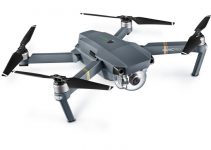Trying to pull off an extreme close-up shot may not be as easy as it sounds. Due to the focus limitations of traditional lenses, more often than not, you’ll need a macro lens to get a tightly framed shot of an object, such as a person’s eye or small text passage imprinted on a piece of paper.
These lenses, however, may be priced higher than most video shooters would expect, especially when it comes to getting occasional extreme close-up shots every now and then. Luckily, Caleb Pike of DSLR Video Shooter has found three viable ways to successfully obtain macro shots without using a macro lens whatsoever, all at a budget of under $20 as he shares these useful tricks in the video below.
One of the showcased methods suggests getting macro shots with the use of macro extension tubes. For roughly $20, only one of those pieces can extend the distance between your lens from the camera sensor multiple times. Keep in mind, though, that the setup process may take you some time before you nail it down as you’ll have to add or remove certain modules depending on the strength of magnification you want to achieve.
Once you’ve setup the macro tubes, however, you’ll be rewarded with an image that is sharper than using any of the other methods mentioned in the article simply because this particular option does not involve any additional piece of glass.
Note that if you use these macro extension tubes, you will lose the electronic aperture or focus control over your lens unless, of course, you find a set of electronic extension tubes for your specific camera mount. Surprisingly enough, there are a few electronic mounts for certain camera models on the market that will cost you just as much as the conventional macro extension tubes.
The second method for capturing extreme close-ups without a micro lens is by using a close-up filter, which is essentially an additional add-on that you screw to the front of your lens. The price of these filters can range between $10 to $20 per set, depending on the size of your filter thread.
By purchasing a set, you’ll be able to control the strength of the magnification to your liking. While this is a very easy-to-use method of obtaining a macro shot, you may notice a very slight drop in the image quality and sharpness due to the fact that an additional piece of glass is being placed in front of your lens.
The last method for getting macro shots mentioned in the video is based on using a lens reverse macro adapter. For $10, you can get an adapter that converts the front of your lens so that it can be mounted on the camera, thus reversing the position of the entire lens. Essentially, the back of the unit becomes the front and vice versa.
This method of macro shooting results in no artifacts or color shift, thus helping preserve detail. Nonetheless, it still comes with some caveats. For instance, by having the back of the lens being the front, you’re exposing it to potential damage, which is particularly dangerous since this part of the lens is typically closest to the camera sensor. Furthermore, the reversal of the optics inside the lens may result in a lower amount of light passing through the unit. That being said, the benefit of a low price tag and ease of use may make this trick a worthy investment, especially when you are in a pinch.
So, there you go! Now you know how to capture macro shots on a minuscule budget without breaking the bank and spending hundreds of dollars just to get a single macro lens.
[source: DSLR Video Shooter]
Order Links:
Kenko Auto Extension Tube Set DG for Canon EOS Lenses
Vivitar 52mm Close Up Macro Lens Kit
Disclaimer: As an Amazon Associate partner and participant in B&H and Adorama Affiliate programmes, we earn a small comission from each purchase made through the affiliate links listed above at no additional cost to you.


